January 15, 2022 Tonga Volcanic Eruption and Tsunami
NCEI News Feed
https://www.ncei.noaa.gov/news/january-15-2022-tonga-volcanic-eruption-and-tsunami
An explosive eruption of the Hunga Tonga-Hunga Ha'apai volcano in the Kingdom of Tonga on January 15, 2022 triggered deadly and damaging tsunami waves.
NCEI News Feed
https://www.ncei.noaa.gov/news/january-15-2022-tonga-volcanic-eruption-and-tsunami
NCEI News Feed
https://www.ncei.noaa.gov/news/january-15-2022-tonga-volcanic-eruption-and-tsunami
NCEI News Feed
https://www.ncei.noaa.gov/news/january-15-2022-tonga-volcanic-eruption-and-tsunami
NCEI News Feed
https://www.ncei.noaa.gov/news/january-15-2022-tonga-volcanic-eruption-and-tsunami
NCEI News Feed
https://www.ncei.noaa.gov/news/january-15-2022-tonga-volcanic-eruption-and-tsunami
NCEI News Feed
https://www.ncei.noaa.gov/news/january-15-2022-tonga-volcanic-eruption-and-tsunami
NCEI News Feed
https://www.ncei.noaa.gov/news/january-15-2022-tonga-volcanic-eruption-and-tsunami
NCEI News Feed
https://www.ncei.noaa.gov/news/january-15-2022-tonga-volcanic-eruption-and-tsunami
NCEI News Feed
https://www.ncei.noaa.gov/news/january-15-2022-tonga-volcanic-eruption-and-tsunami
NCEI News Feed
https://www.ncei.noaa.gov/news/january-15-2022-tonga-volcanic-eruption-and-tsunami
NCEI News Feed
https://www.ncei.noaa.gov/news/january-15-2022-tonga-volcanic-eruption-and-tsunami
NCEI News Feed
https://www.ncei.noaa.gov/news/january-15-2022-tonga-volcanic-eruption-and-tsunami
NCEI News Feed
https://www.ncei.noaa.gov/news/january-15-2022-tonga-volcanic-eruption-and-tsunami
NCEI News Feed
https://www.ncei.noaa.gov/news/january-15-2022-tonga-volcanic-eruption-and-tsunami
NCEI News Feed
https://www.ncei.noaa.gov/news/january-15-2022-tonga-volcanic-eruption-and-tsunami
NCEI News Feed
https://www.ncei.noaa.gov/news/january-15-2022-tonga-volcanic-eruption-and-tsunami
NCEI News Feed
https://www.ncei.noaa.gov/news/january-15-2022-tonga-volcanic-eruption-and-tsunami
NCEI News Feed
https://www.ncei.noaa.gov/news/january-15-2022-tonga-volcanic-eruption-and-tsunami
NCEI News Feed
https://www.ncei.noaa.gov/news/january-15-2022-tonga-volcanic-eruption-and-tsunami
NCEI News Feed
https://www.ncei.noaa.gov/news/january-15-2022-tonga-volcanic-eruption-and-tsunami
NCEI News Feed
https://www.ncei.noaa.gov/news/january-15-2022-tonga-volcanic-eruption-and-tsunami
NCEI News Feed
https://www.ncei.noaa.gov/news/january-15-2022-tonga-volcanic-eruption-and-tsunami
NCEI News Feed
https://www.ncei.noaa.gov/news/january-15-2022-tonga-volcanic-eruption-and-tsunami
Jeff Stratton’s beloved Larks Lake left his feet and legs covered in hundreds of itchy red welts.
“It was horrible,” said Stratton, 68, “Crazy itchy. Crazy painful.”
The post Researchers pioneer method to combat swimmer’s itch by relocating ducks first appeared on Great Lakes Echo.Great Lakes Echo
http://greatlakesecho.org/2024/05/24/researchers-pioneer-method-to-combat-swimmers-itch-by-relocating-ducks/
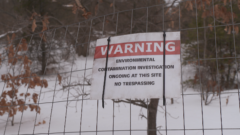
In a ProPublica story, former 3M chemist Kris Hansen details how the chemical giant hid the dangers of PFOS from employees and the public. She was asked by senior scientist Jim Johnson to retest for what are now known as “forever chemicals” in human blood samples from the general population, in 1997.
Great Lakes Now
https://www.greatlakesnow.org/2024/05/pfas-news-roundup-3m-scientist-exposes-50-years-of-pfas-deceit-just-as-the-forever-chemicals-are-found-in-great-lakes-precipitation/
Green Bay, WI
https://www.weather.gov/grb/052124_SevereStormSummary
Green Bay, WI
https://www.weather.gov/grb/052124_SevereStormSummary
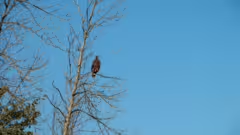
By Emma McIntosh, The Narwhal
Growing up in a shiny Toronto-area suburb lined with concrete and puny trees, the only bald eagles Sheetal Rawal saw in the 1980s were in her imagination or on TV.
It wasn’t for lack of trying. Inspired by a particularly stirring episode of Alvin and the Chipmunks — the gang goes to Washington, D.C., to convince the president to stop a developer from bulldozing an eagle’s nest — she remembers gazing out of the car window on road trips, scanning treetops and skies for giant birds with bright white heads.
Great Lakes Now
https://www.greatlakesnow.org/2024/05/bald-eagles-nearly-died-out-what-can-we-learn-from-their-return-to-the-southern-great-lakes/
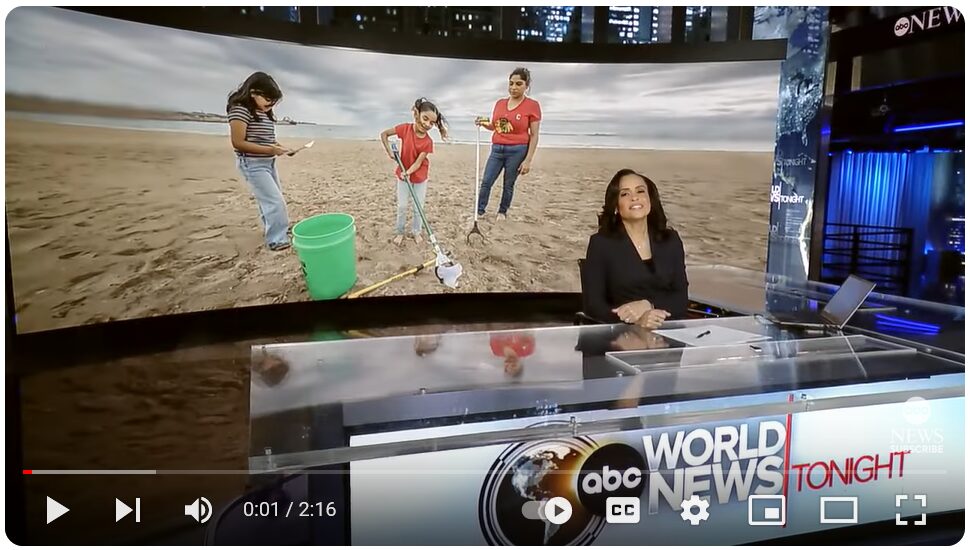
Adopt-a-Beach made a big splash in the media this spring, raising awareness about plastic pollution and solutions. And 20 years’ worth of Adopt-a-Beach volunteers were part of it.
“One of the things I love about Adopt-a-Beach is how long our volunteers’ work lasts,” said Olivia Reda, Volunteer Engagement Manager and author of the new report Adopt-a-Beach: 20 Years of Great Lakes Litter Data.
“On the days of their cleanups, volunteers keep plastic and other trash out of the Great Lakes. People who see the cleanups are often inspired to do cleanups of their own weeks or months later. And the litter data our volunteers collect becomes part of a 20-plus year dataset that’s helping communities find solutions to plastic pollution.”
Here are some of this spring’s Adopt-a-Beach stories from across the region:
“Thanks again to everyone who volunteers with Adopt-a-Beach,” said Reda. “I am so grateful for each and every action you’ve taken to help protect the Great Lakes!”
A special thanks to this year’s top Adopt-a-Beach sponsors: HSBC, Meijer, and Unilever.
The post Adopt-a-Beach Makes a Splash appeared first on Alliance for the Great Lakes.
News - Alliance for the Great Lakes
News - Alliance for the Great Lakes
https://greatlakes.org/2024/05/adopt-a-beach-makes-a-splash/
More than 700 freshwater researchers and practitioners are attending the International Association for Great Lakes Research’s 67th annual conference in Windsor, Ontario. Presentation topics include algal blooms, climate change, the emergence of PFAS chemicals, and pollution caused by microplastics. Read the full story by The Toledo Blade.
Great Lakes Commission
https://www.glc.org/dailynews/20240522-iaglr-2024
Michigan’s most popular state park is launching a new electronic beach warning system that can automatically alert authorities of a drowning. The system is the latest effort to keep swimmers safe amid a spate of drowning deaths. Read the full story by Bridge Michigan.
Great Lakes Commission
https://www.glc.org/dailynews/20240522-beach-tech
Over 20,000 individual cruise passengers are expected on the Great Lakes this year—double the number from 2014. There will be six cruise lines operating in the Great Lakes that are expected to make about 600 port visits this year. Read the full story by Bridge Michigan.
Great Lakes Commission
https://www.glc.org/dailynews/20240522-cruising-expectations
The Hamilton-Oshawa Port Authority has reached an agreement with the owner of the decommissioned Somerset Generation Station to build a new Lake Ontario “short sea shipping corridor” and port at the 1,800-acre site in Barker, New York. Read the full story by the Niagara Gazette.
Great Lakes Commission
https://www.glc.org/dailynews/20240522-ontario-port
Concrete and steel casks storing spent nuclear fuel rods await relocation to a permanent underground chamber for indefinite cooling. Until that facility is built, they slowly accumulate on concrete pads along the Michigan coast. Read the full story by MLive.
Great Lakes Commission
https://www.glc.org/dailynews/20240522-nuclear-waste
Bald eagles are back in a big way: after 50 years of conservation efforts, the Ontario government made the bald eagle’s recovery official in 2023, announcing them no longer at risk. What’s happened to bald eagles is a story of recovery, but only if we actually learn from it. Read the full story by Bridge Michigan.
Great Lakes Commission
https://www.glc.org/dailynews/20240522-bald-eagles
Scientists have been discovering small changes on Lake Michigan that could lead to big impacts on fishing, tourism and those who make their livelihood on the water. A slightly warmer, windier, and wetter climate has already begun to change the footprint of the lake and its impact on West Michigan. Read the full story by WOOD-TV – Grand Rapids, MI.
Great Lakes Commission
https://www.glc.org/dailynews/20240522-michigan-changes
The impact of maritime trade is multifaceted, from affecting the air quality of the surrounding Detroit River corridor to the arrival of invasive species. A series of initiatives are in motion to assess carbon emissions from port operations and bolster efforts to protect the waterway. Read the full story by Bridge Detroit.
Great Lakes Commission
https://www.glc.org/dailynews/20240522-detroit-maritime
This year, a joint effort by various non-profits and government organizations raised over 11,500 coho salmon to combat invasive alewives. Over the past 50 years they have released over 1 million coho salmon into the Manitowoc River in Manitowoc, Wisconsin. Read the full story by WFRV-TV – Manitowoc, WI.
Great Lakes Commission
https://www.glc.org/dailynews/20240522-wisconsin-coho
A judge is limiting development near the shoreline on Carleton Island in the St. Lawrence River near Cape Vincent, New York. The Thousand Islands Land Trust filed a lawsuit earlier this spring to stop a neighboring property owner from development that it argues violates a conservation easement. Read the full story by North Country Public Radio.
Great Lakes Commission
https://www.glc.org/dailynews/20240522-carleton-island
Current watches, warnings, and advisories for Brown County (WIC009) WI
Current watches, warnings, and advisories for Brown County (WIC009) WI
https://api.weather.gov/alerts/urn:oid:2.49.0.1.840.0.ee830218fddad00ce31abb8f7e461f7db446bd38.002.1.cap
Current watches, warnings, and advisories for Brown County (WIC009) WI
Current watches, warnings, and advisories for Brown County (WIC009) WI
https://api.weather.gov/alerts/urn:oid:2.49.0.1.840.0.b8f62648b0950c52b3977a62a83d05e3c4abc10a.001.1.cap
Current watches, warnings, and advisories for Brown County (WIC009) WI
Current watches, warnings, and advisories for Brown County (WIC009) WI
https://api.weather.gov/alerts/urn:oid:2.49.0.1.840.0.5a9ffc08fbb065570bfe2c8961c0de6bd64034d1.002.1.cap
Current watches, warnings, and advisories for Brown County (WIC009) WI
Current watches, warnings, and advisories for Brown County (WIC009) WI
https://api.weather.gov/alerts/urn:oid:2.49.0.1.840.0.f32592e1b48cd0348f657c4c9dae7982481e015d.001.1.cap
Current watches, warnings, and advisories for Brown County (WIC009) WI
Current watches, warnings, and advisories for Brown County (WIC009) WI
https://api.weather.gov/alerts/urn:oid:2.49.0.1.840.0.42b497d63a4e60f1bfd51aeb98bcc291a2c5bc63.001.1.cap

I Speak for the Fish is a monthly column written by Great Lakes Now Contributor Kathy Johnson, coming out the third Monday of each month. Publishing the author’s views and assertions does not represent endorsement by Great Lakes Now or Detroit Public Television.
Great Lakes Now
https://www.greatlakesnow.org/2024/05/i-speak-for-the-fish-are-muskies-still-the-readers-favorite/
Seventy animals were turned in at an exotic pet surrender event in Kimberly, Wisconsin, on Sunday. Thirty seven people attended and there was a Facebook Reach of 13,000 people. Included in the surrenders were a four parakeets, a ferret, three red eared sliders, and a 13 foot reticulated python!
The Exotic Pet Surrender Event was held March 18th, 2024 between 9 AM and 1 PM at the Kimberly Public Library. J&R Aquatic Animal Rescue was accepting fish, invertebrates, reptiles, pet birds, small mammals, and plants — no questions asked.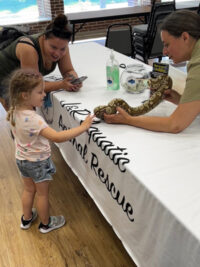
In some areas, there are no rehoming options for exotic animals such as fish, birds, and reptiles. Some pet owners that are 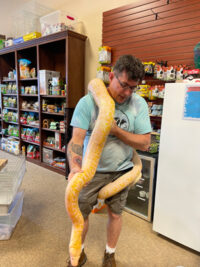 unable to care for their pet may think that releasing the animal is the right thing to do, however, releasing a pet is harmful for the animal and the environment.
unable to care for their pet may think that releasing the animal is the right thing to do, however, releasing a pet is harmful for the animal and the environment.
This event brought together a collection of rehoming partners that provide responsible alternatives to release for exotic pet owners who are no longer able to care for their pets. J&R Aquatic Animal Rescue (JRAAR) hosted the event with help from another area organization; the Fox-Wolf Watershed Alliance.
Questions regarding the Exotic Pet Surrender Event or about future surrenders or events can be directed to John Moyles of J&R Aquatic Animal Rescue. He can be reached at adoptions@jraar.org
For information on future pet surrender events happening across the state of Wisconsin, visit https://www.jraar.org/
Photo Credit: Chris Acy, J&R Aquatic Animal Rescue
Questions? Comments? Contact Chris Acy, the AIS Coordinator covering Brown, Outagamie, Fond du Lac, Calumet, and Winnebago Counties at (920) 460-3674 or chris@fwwa.org!
Follow the Fox Wolf Watershed Alliance’s Winnebago Waterways Program on our Winnebago Waterways Facebook page or @WinnWaterways on Twitter! You can also sign-up for email updates at WinnebagoWaterways.org.
Winnebago Waterways is a Fox-Wolf Watershed Alliance program. The Fox-Wolf Watershed Alliance is an independent nonprofit organization that identifies and advocates effective policies and actions that protect, restore, and sustain water resources in the Fox-Wolf River Basin.
Check out the Keepers of the Fox Program at https://fwwa.org/watershed-recovery/lower-fox-recovery/
Reporting invasive species is a first step in containing their spread. Maintaining and restoring our waters and landscapes can reduce the impacts even when we don’t have other management options to an invasive species.
The post Exotic Pet Surrender in Kimberly Gives Pet Owners Options appeared first on Fox-Wolf Watershed Alliance.
Fox-Wolf Watershed Alliance
https://fwwa.org/2024/05/20/exotic-pet-surrender-in-kimberly-gives-pet-owners-options/?utm_source=rss&utm_medium=rss&utm_campaign=exotic-pet-surrender-in-kimberly-gives-pet-owners-options
Article provided by: Wisconsin AIS Partnership
One of the many challenges facing a healthy waterbody is how to prevent the spread of aquatic invasive species (AIS) to protect the ecological, social, and economic benefits that we so greatly cherish in Wisconsin. Prevention of AIS is key to the long-term sustainability of ‘lake life’ and needs to be at the forefront of any protection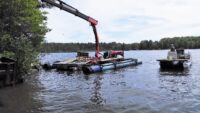 strategy. Simply put, an ounce of prevention is worth a pound of cure. But if only it were just that simple. The variables and situations that can impact a waterbody may seem so limitless that it can be daunting to know where to start. As a lake resident, you might consider questions such as:
strategy. Simply put, an ounce of prevention is worth a pound of cure. But if only it were just that simple. The variables and situations that can impact a waterbody may seem so limitless that it can be daunting to know where to start. As a lake resident, you might consider questions such as:
Does the boat launch near my house have an AIS prevention sign?
What if a new AIS is documented in our lake?
What are people doing upstream that could impact our lake?
Do they follow AIS prevention laws?
Where will the next visiting boat come from and will they have taken prevention steps?
What if they didn’t? What then? What next?…
The problem can feel overwhelming. The important thing is that each of us can do something. Big or small. Simple or complex. New or old. Every action counts and every action matters. As a lake resident, you are in a unique stakeholder position to do something particularly powerful and that is to flex your consumer power when it comes to services that you might need as part of your lake life. These might be services such as dock and lift installation/maintenance, shoreline construction work, etc. Any activity that involves installing, removing, operating, and transporting water-related equipment, structures, and gear presents a high risk of inadvertently 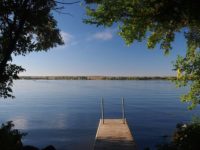 transporting and spreading AIS without proper decontamination. While everyone is required to “inspect, remove, and drain” per Wisconsin State Statutes NR40, these steps might not always be 100% effective especially for high-risk users such as service providers who are often working on multiple lakes in a single day and interacting with lake water and sediment in ways that recreational users are not. These kinds of service providers need to follow the same prevention steps that we all do, but they are not required to take the extended steps, such as spraying equipment with a bleach solution, making it all the more important for consumers to advocate for their lake.
transporting and spreading AIS without proper decontamination. While everyone is required to “inspect, remove, and drain” per Wisconsin State Statutes NR40, these steps might not always be 100% effective especially for high-risk users such as service providers who are often working on multiple lakes in a single day and interacting with lake water and sediment in ways that recreational users are not. These kinds of service providers need to follow the same prevention steps that we all do, but they are not required to take the extended steps, such as spraying equipment with a bleach solution, making it all the more important for consumers to advocate for their lake.
To flex your consumer muscle, here are some simple ideas to consider –
• Ask your existing or prospective provider what AIS prevention steps they take.
• Build ‘decontamination’ into the service contract. Ask that the provider implement at least one decontamination option (see figure) and provide you with documentation such as a video, logbook, or arrange to witness it in-person.
• Talk with your neighbor or lake group to discuss the possibility of hiring the same provider to reduce the number of providers coming to the lake throughout the season.
Thank you for being a steward of your lake!
Photo Credit: Steph Boismenue, McGhiever
Questions? Comments? Contact Chris Acy, the AIS Coordinator covering Brown, Outagamie, Fond du Lac, Calumet, and Winnebago Counties at (920) 460-3674 or chris@fwwa.org!
Follow the Fox Wolf Watershed Alliance’s Winnebago Waterways Program on our Winnebago Waterways Facebook page or @WinnWaterways on Twitter! You can also sign-up for email updates at WinnebagoWaterways.org.
Winnebago Waterways is a Fox-Wolf Watershed Alliance program. The Fox-Wolf Watershed Alliance is an independent nonprofit organization that identifies and advocates effective policies and actions that protect, restore, and sustain water resources in the Fox-Wolf River Basin.
Check out the Keepers of the Fox Program at https://fwwa.org/watershed-recovery/lower-fox-recovery/
Reporting invasive species is a first step in containing their spread. Maintaining and restoring our waters and landscapes can reduce the impacts even when we don’t have other management options to an invasive species.
The post How Lake Stewardship & Consumer Power Can Help Prevent the Spread of AIS appeared first on Fox-Wolf Watershed Alliance.
Fox-Wolf Watershed Alliance
https://fwwa.org/2024/05/20/how-lake-stewardship-consumer-power-can-help-prevent-the-spread-of-ais/?utm_source=rss&utm_medium=rss&utm_campaign=how-lake-stewardship-consumer-power-can-help-prevent-the-spread-of-ais
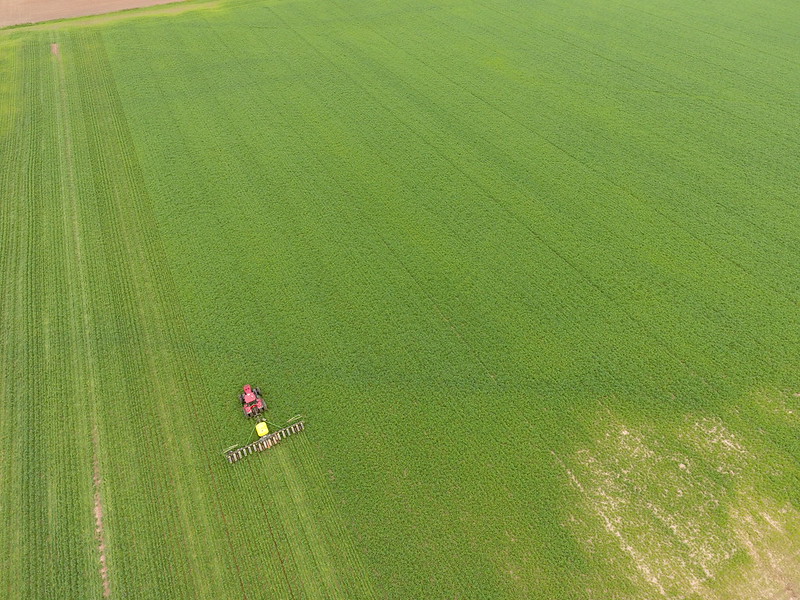
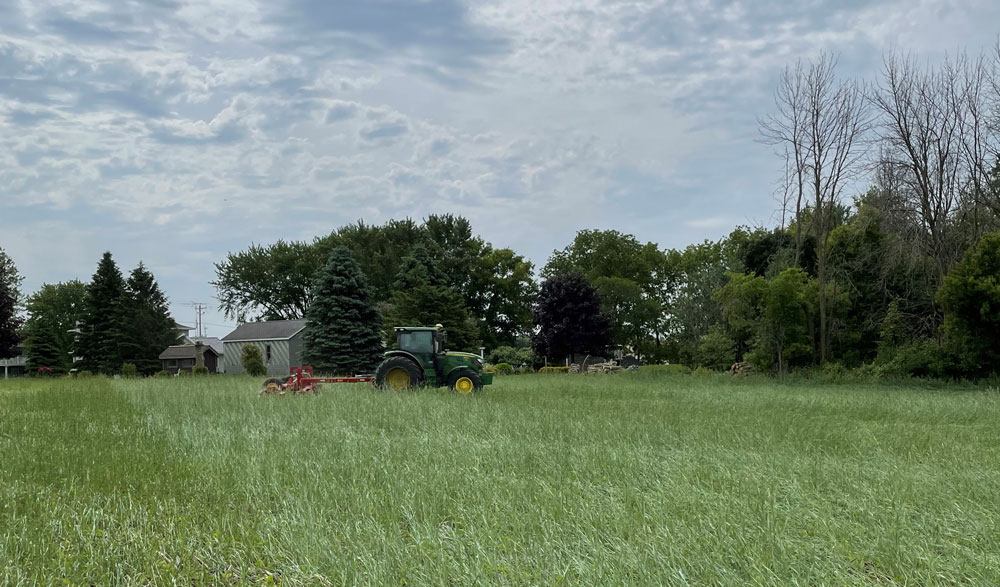
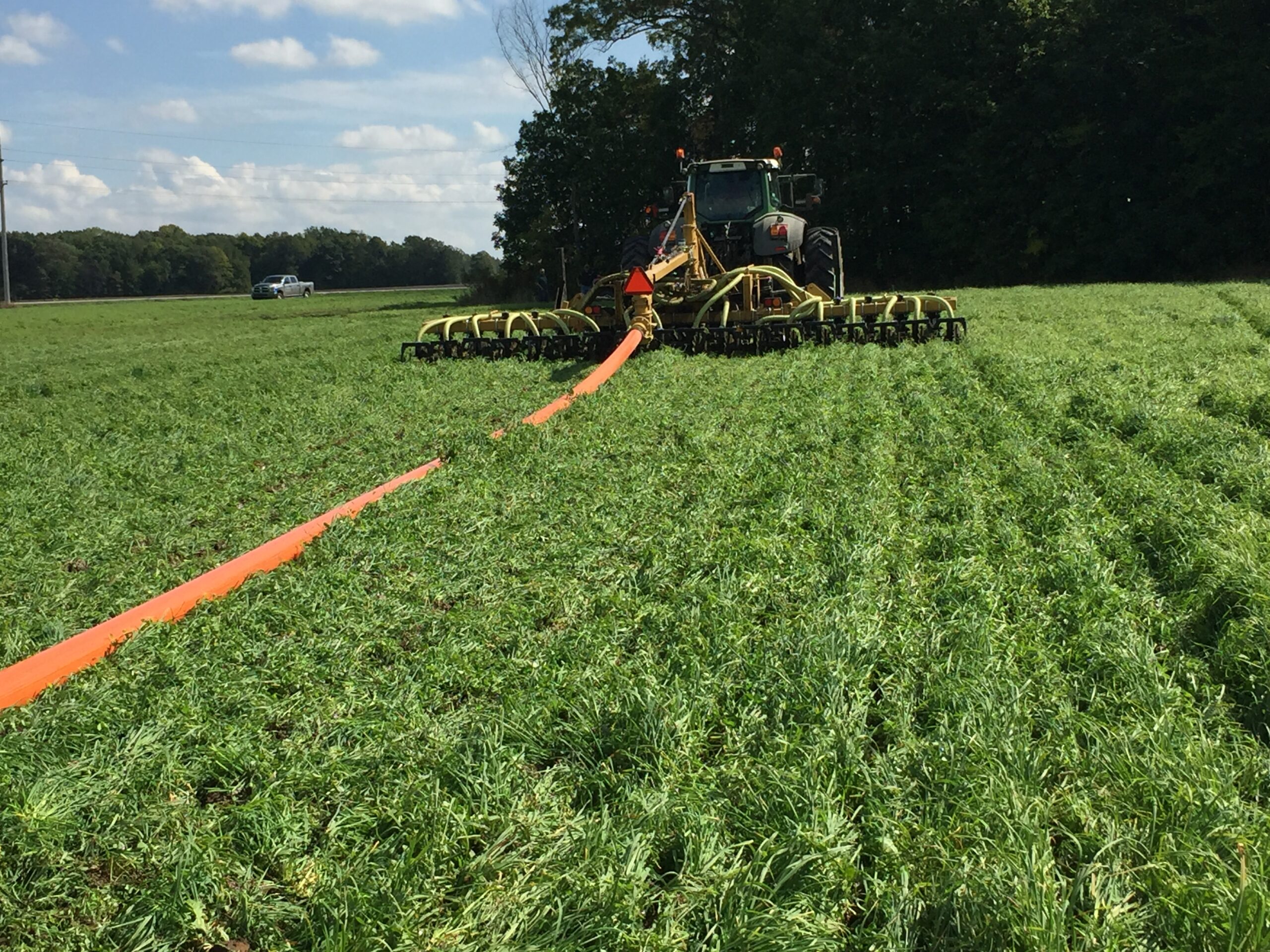
The U.S. Department of Agriculture (USDA) launched its Partnerships for Climate Smart Commodities program in 2023 to increase adoption of climate smart practices on farms across the country and to work to develop markets that could lead to premiums for commodities grown using these practices.
Fox-Wolf Watershed Alliance secured Climate Smart funding because many of the same practices that USDA supports for carbon capture also build soil health and reduce runoff resulting in improved water quality.
Agriculture is a vital part of Northeast Wisconsin’s landscape. To ensure NE Wisconsin farmer’s remain competitive in a changing market, this program is offering technical assistance and cost share to help farmers work toward adoption of climate smart practices.
The annual payment will be divided equally and paid during the semi-annual (summer and winter) planning meetings following the implementation of practice.
Accurate Whole Farm SnapPlus $5/acre (max of $1500)
Low Disturbance Manure Application (Optional) $28.11
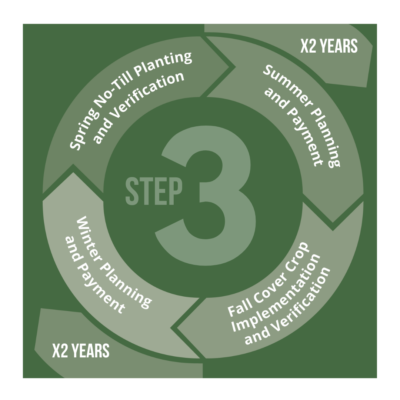
Ready to start farming Climate Smart? To begin enrollment, review the Continuous Cover System program requirements. When you are ready to enroll, complete and submit the required application documents. Simply download, fill out, and scan and email or mail to Fox-Wolf. Fox-Wolf Watershed Alliance will respond within 2 weeks upon receipt of application. Timeline is dependent upon verifying eligibility through USDA FSA.
Review Practice Requirements and Eligibility
Before filling out the required enrollment paperwork, please review the Farm Climate Smart program requirements and eligibility to determine if you qualify.
Program requirements and eligibility can be found in the Requirements and Eligibility document. If you have questions regarding eligibility, contact your County Land Conservation Department Climate Smart staff.
Download and Fill Out Documents
To begin enrollment, download and fill out the Producer Application, Privacy Information Release Request, and Field Enrollment forms. To download, click the image and follow the download instructions prompted by your browser.
All documents may be filled out online or by hand. Either way you decide to complete the application, the documents must be signed and dated by hand or as a encrypted digital signature.
Cover Crop Requirements
Tillage Requirements
Planning & Additional Requirements
Farms that are located within the 21 counties of the Fox-Wolf Basin (see map) are considered eligible. Farms located within the watershed boundaries will receive priority. Fox-Wolf will evaluate applications based on suitability and availability of technical assistance and reserves the right to decline enrollment from farms in counties outside the core (Brown, Calumet, Fond du Lac, Outagamie, Shawano, Waupaca, Waushara, and Winnebago) watershed boundaries.
Additional requirements apply, as outlined in the Requirements for Enrollment section above. For scenario specific questions, please contact Fox-Wolf at Climatesmart@fwwa.org or your County Land Conservation Climate Smart staff listed below.
Partnerships for Climate Smart Commodities is a USDA program “committed to supporting a diverse range of farmers, ranchers, and private forest landowners through Partnerships for Climate-Smart Commodities. This effort will expand markets for America’s climate-smart commodities, leverage the greenhouse gas benefits of climate-smart commodity production, and provide direct, meaningful benefits to production agriculture, including for small and underserved producers. USDA is investing more than $3.1 billion for 141 projects through this effort and all the projects require meaningful involvement of small and underserved producers.”
For more information, please visit USDA’s Partnership for Climate Smart Commodities website.
No, farms of all sizes are eligible to apply. Farms that are able to enroll 100+ acres will have priority for the Continuous Cover System, but funding is also available for smaller farms.
Producers who are already utilizing cover crops and no-till on their farms are eligible, but only on fields that are not currently being managed with cover crops/no-till. Fields must be moving from a conventional system to a soil health system.
Producers who are already implementing cover crops and no-till on large portions of their farms are not considered eligible for the Continuous Cover System.
No, fields receiving cost share must be moving from conventional management to soil health systems.
Producers must be enrolled with FSA (have a Farm ID) before signing a contract. If a producer is not currently enrolled, they can become enrolled and then participate in the project.
Technical support to assist with FSA enrollment is available, through this program, by Wisconsin Farmers Union. Please see the Contact Information section below to be connected with Wisconsin Farmers Union directly.
No, LDMA is currently available for cost share only as part of the Continuous Cover System (cover crops and no-till).
Field eligibility will be determined by the County Land Conservation Climate Smart staff. We are looking to choose producers who will continue implementing practices long term.
Yes, a variety of practices that have been defined by USDA NRCS as Climate Smart (providing a climate benefit) are eligible through Farm Climate Smart.
In partnership with Pheasants Forever, cost-share funds for Tree or Shrub Planting and Precision Agriculture Analysis farm planning are available.
Funding is available for additional conservation practices that primarily address the needs of small or underserved producers. This list of practices is under development and will be included in the Climate Smart Practice list as details are finalized.
For more details on practice standards and cost share, please see the full list of additional practices here.
Underserved Producers are defined by USDA FSA and USDA NRCS guidelines. Detailed resources can be found on their website and are summarized below.
Project Management
Katie Woodrow
(920) 915-5767
┃katie@fwwa.org
Tim Burns
(920) 841-0104
┃tim@fwwa.org
Dedicated County Land Conservation Climate Smart staff are located in 8 counties throughout the Fox-Wolf Basin. Contact the staff person in the county nearest to you to determine program eligibility and to begin enrollment.
Brent Levash
(920) 391-4620
┃brent.levash@browncountywi.gov
Autumn Gomez-Tagle
(920) 849-1493
┃autumn.gomeztagle@calumetcounty.org
Justin Loehrke
(920) 414-0096
┃justin.loehrke@fdlco.wi.gov
Andy Kiefer
(920) 832-5073
┃andy.kiefer@outagamie.org
Bill Koepke
(715) 526-4620
┃bill.koepke@shawanocountywi.gov
Stefan Stults
(715) 258-6245
┃stefan.stults@co.waupaca.wi.us
Kaylee Overby
(920) 787-0443
┃kaylee.overby@wausharacountywi.gov
Eric Bertram
(920) 232-1958
┃ebertram@winnebagocountywi.gov
Need help enrolling? Maybe a question about eligibility? Confused about program requirements?
Fill out the Contact Us form and we will get back to you as soon as we can!
The post Continuous Cover System appeared first on Fox-Wolf Watershed Alliance.
Fox-Wolf Watershed Alliance
https://fwwa.org/2024/05/20/continuouscover/?utm_source=rss&utm_medium=rss&utm_campaign=continuouscover
Each year, the Great Lakes attract several million tourists from the U.S. and around the world. The Great Lakes hold one-fifth of all the fresh water on the Earth’s surface with a combined coastline extending for over 10,000 miles. However, those are some rather basic facts – whether it’s pirates, shipwrecks, or Babe Ruth’s first official home run, these fascinating tidbits are a bit less straightforward. Read the full story by Classic City News.
Great Lakes Commission
https://www.glc.org/dailynews/20240520-greatlakes-facts